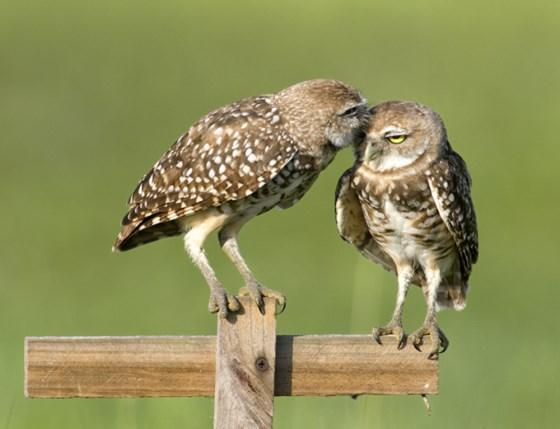
4 minute read
Charles Sobczak
H e r e’s W h a t’s H a p p e n i n g A t T h e M u s e u m o f E v e r g l a d e s
* * * S p e c i a l N o t i c e * * * T h e M u s e u m o f t h e E v e r g l a d e s i s o p e n ! T h e m a i n e x h i b i t h a l l w a s n o t d a m a g e d d u r i n g I a n . T h e n e w e x h i b i t , “G e a r h e a d s i n t h e G l a d e s” w i l l b e o p e n i n g s o o n !
Advertisement
About the Museum of the Everglades: First opened in 1927 as a commercial laundry, the building that now houses Museum of the Everglades is one of the historic structures still standing as a testament to the town’s time as a once-bustling center of business and the region’s first County seat.
Exhibit Coming Soon through January 28, 2023 Gearheads in the Glades
This exhibit thoroughly explores the ways that swamp ingenuity was used to modify machines and motor vehicles to traverse and tame the Everglades. Both airboats and swamp buggies were spawned by mixing surplus airplane parts with boats, cars, trucks, and tractors. The history of these hybrids and mechanical Frankenstein creations will be told, with both vintage photos and actual vehicles included in the displays.
Event November 17, 2:00 pm to 3:00 pm Engines in the Everglades:
How Men Modified Machines to Tame the Everglades
This companion lecture to the current “Gearheads in the Glades” exhibit at museum of the Everglades explores the ways in which mechanically-inclined Gladesmen combined parts from airplanes, boats, cars, trucks, and tractors to create hybrid vehicles that could traverse the swampy terrain of South Florida.
Event December 15, 2022, 2:00 to 3:00 pm The Art of Dick Jay
Museum of the Everglades Manager Thomas Lockyear will discuss the poignant and often whimsical way that artist Dick Jay captured historic events and personalities with paint and sculpture. Part primitive, part folk art, Mr. Jay’s prolific work captured not only the essence of life in Florida’s Last Frontier, but the spirit of the people living it..
Some events require reservations. Please make reservations online at colliermuseums.com OR by calling the museum at 239-252-5026 during museum hours, Tuesday –Saturday, 9am-4pm once the museum reopens...
Hole in the Wall Pizza…
and Other Delicious Things
Open M-Th 11 am –7 pm Fri-Sat 11 am—9 pm Closed Sunday 104 Buckner Ave., Everglades City 239-695-4444 www.HoleInTheWall.Pizza
Burrowing Owl (Athene cunicularia) Other names: ground owl, howdy owl, burrow owl / Status: FL = species of special concern, IUCN = LC / Length: 7.5 -9.8 in. (19-25 cm) / Wingspan: 21.7 in. (55 cm) / Weight: 5.3 oz (150 g) / Life span: to 9 years / Nests: throughout SW Florida / Found: AC, near coast, mainland / Months found: jfMAMJjasond (lower case indicates nesting season).
The burrowing owl is best described as adorable. It was the subject for the 2002 children’s book Hoot by Carl Hiaasen and is a popular wildlife calendar subject in Florida. Its diminutive size, coupled with its long legs and large yellow eyes make it a favorite for photographers everywhere. One of the best places to find this owl is in Cape Coral, where it has adapted to living in a suburban environment. There are an estimated 1,000 breeding pairs located in the greater Cape area (see the Four-Mile Ecological Park in the Lee County section of this book for specific locales to find these owls). Every winter Cape Coral celebrates this fascinating bird with the Burrowing Owl Festival.
The conversion of much of its former range into farmland, suburban, and urban settings has had a major impact on the burrowing owl. It is believed that before these changes in the landscape, the burrowing owl inhabited every state in the union. Today its eastern range is limited to Florida, where it is a species of special concern. Its New World range runs from Tierra del Fuego at the tip of South America all the way into the Northwest Territories of Canada. In this vast and open range it is not considered endangered.
As the name implies, the burrowing owl lives in burrows. While capable of digging its own burrow, it often takes up residence in abandoned gopher tortoise nests, prairie dog holes, and an assortment of human excavations. It is both diurnal and nocturnal, feeding on insects during daylight hours and small rodents such as moles and mice during the evening. The burrowing owl has been known to bring mammal dung to its burrow to attract dung beetles, which it then consumes. It is, in essence, bird farming. Because it is a ground-dwelling and nesting bird, the burrowing owl is preyed upon by feral cats, snakes, and coyotes. Its nests are often raided by snakes and rats.

